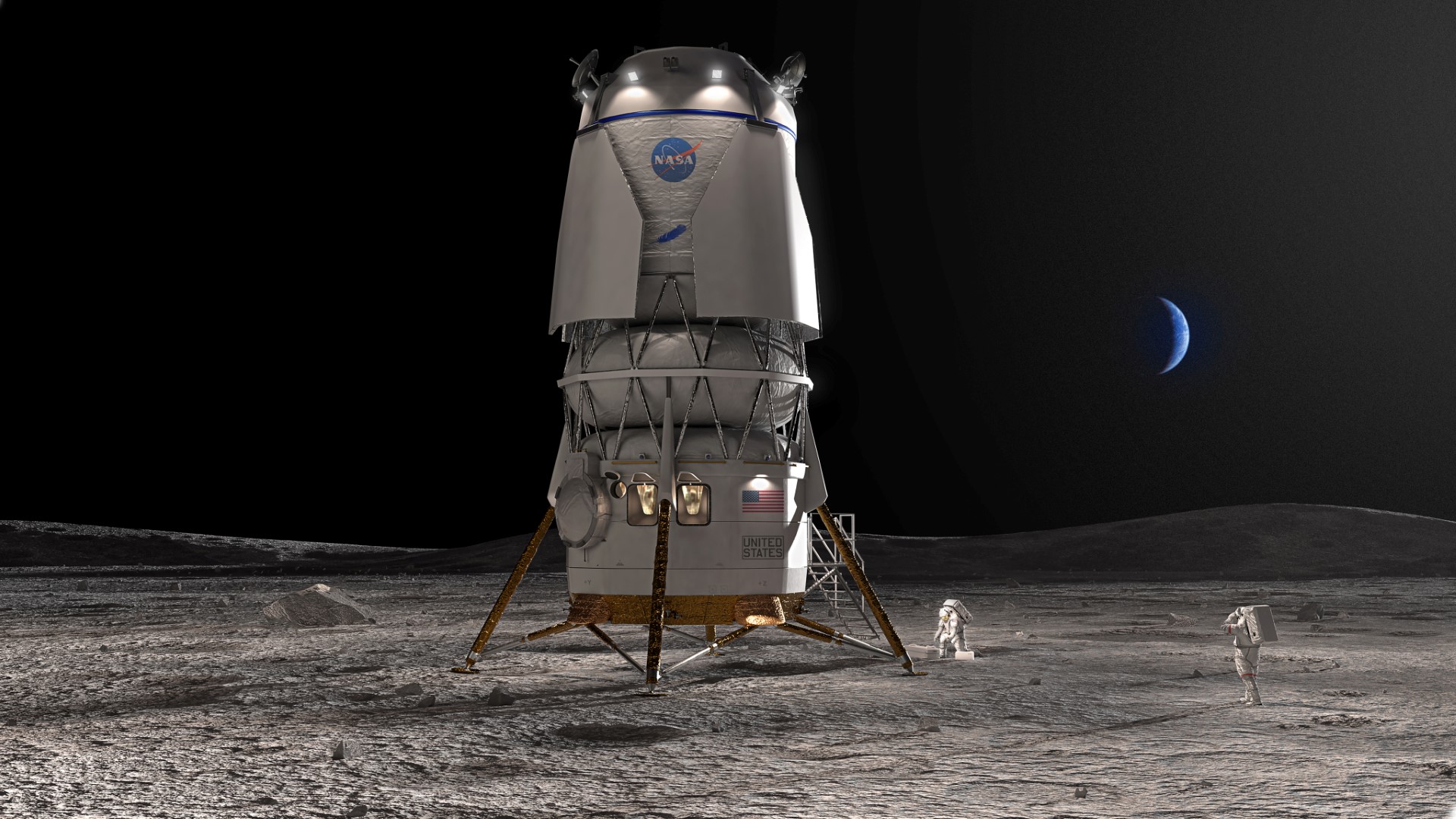Washington, United States – Two years after awarding Elon Musk’s SpaceX a contract to ferry astronauts to the surface of the Moon, NASA on Friday announced it had chosen Blue Origin, a rival space company founded by billionaire Jeff Bezos, to build a second lunar lander.
Blue Origin’s lander was selected for the Artemis 5 mission, currently scheduled to take place in 2029. The company will first have to demonstrate it can safely land on the Moon without a crew.
Bezos, the founder and former CEO of Amazon, said on Twitter he was “honored to be on this journey with @NASA to land astronauts on the Moon – this time to stay.”
The contract amounts to $3.4 billion, but John Couluris, vice-president in charge of lunar transport at Blue Origin, said during a press conference that the company would itself contribute “well north” of that amount to develop the craft.
The Artemis program marks NASA’s return to the Moon after more than 50 years and is made up of several missions, each with increasing complexity.
In 2021, the US agency chose SpaceX to build a lander for Artemis 3, the first mission in the series to have actual astronauts set foot on the lunar surface.
The contract was worth $2.9 billion, although SpaceX is supplementing that amount with its own funding.
Blue Origin had also competed for the first contract, and filed an unsuccessful lawsuit against NASA when SpaceX was chosen as the sole lander provider.
The space agency had originally intended to offer two contracts, a practice commonly used to guard against the possibility one fails, but said it had been constrained by budget concerns.
NASA in 2022 also chose the SpaceX lander for its Artemis 4 mission, but at the same time requested submissions from other companies for the rest of the program.
“We want more competition. We want two landers,” NASA boss Bill Nelson said on Friday. “It means that you have reliability. You have backups.”
Blue Origin’s lander, dubbed Blue Moon, is being developed with several partner companies, including Draper, Boeing, Astrobotic, Honeybee Robotics, and Lockheed Martin.
The latter will be responsible for developing a crucial element. Once in lunar orbit, Blue Moon will need to be refueled before it can descend and collect the astronauts from the surface of the Moon.
Therefore Lockheed Martin has to develop a kind of shuttle to refuel Blue Moon around the Moon.
Blue Origin plans to use its New Glenn rocket, which has never flown before, to launch both its lander and this refueling shuttle.
Artemis 4, scheduled for 2028, and Artemis 5 a year later will both land on the Moon, but will first pass through a new space station in lunar orbit, called Gateway, which has yet to be constructed.
Prelude to Mars
Artemis astronauts will take off aboard NASA’s Orion capsule, propelled to the Moon by the agency’s new SLS mega-rocket.
Both these elements were tested uncrewed when Artemis 1 took place six months ago, and will be tested with crew during Artemis 2.
For Artemis 3, Orion will dock directly to SpaceX’s lander. Two astronauts will then descend on the Moon for about a week, while two others will remain on board Orion.
Once their experiments are over, the two adventurers will go back in the lander to Orion, which will bring the four crew members back to Earth.
Afterwards, Orion will attach to the Gateway space station, and the astronauts will pass through it before boarding the SpaceX lander, for Artemis 4, or Blue Origin for Artemis 5.
All of these missions target the south pole of the Moon, where there is water in the form of ice.
SpaceX’s lander will be a modified version of its Starship spacecraft, currently under development in Texas. It exploded in flight during a first major test in April.
The goal of the Artemis program is to learn to live on the Moon, in order to test out all the technologies necessary for an even more perilous journey: to Mars.







